Abstract
The nutritional requirements of three species of anaerobic coryneforms and their serotypes (Propionibacterium acnes types I and II, P. avidum types I and II, and P. granulosum) were determined. Strains of P. avidum would consistently grow to a transmittance of 1 to 3% at 560 nm in a basal salts medium supplemented with glucose, pantothenate, biotin, thiamine, and 12 amino acids (alanine, arginine, cysteine, glutamine, glycine, histidine, isoleucine, methionine, phenylalanine, serine, tyrosine, and tryptophan). Strains of P. acnes and P. granulosum, however, failed to grow in this medium unless six additional amino acids were present (asparagine, leucine, lysine, proline, threonine, and valine). All three species grew equally well whether the 18 amino acids were supplied in the form of a casein hydrolysate supplemented with tryptophan or were added separately. Nicotinamide enhanced growth of P. acnes but had no effect on growth of P. avidum and P. granulosum. Other nutrients which were not absolute requirements, but which significantly improved growth of these species, included the purines guanine and/or adenine, Tween 80, which served as a source of oleic acid, sodium L-lactate, alpha-ketoglutarate, and pyruvate. Strains (86) comprising all five groups grew well in the defined medium, except four strains of P. acnes type II (29 tested), which failed to grow unless heme and vitamin K were added to the medium. One strain of P. granulosum (22 tested) failed to grow in any defined medium, suggesting an additional growth factor requirement.
Full text
PDF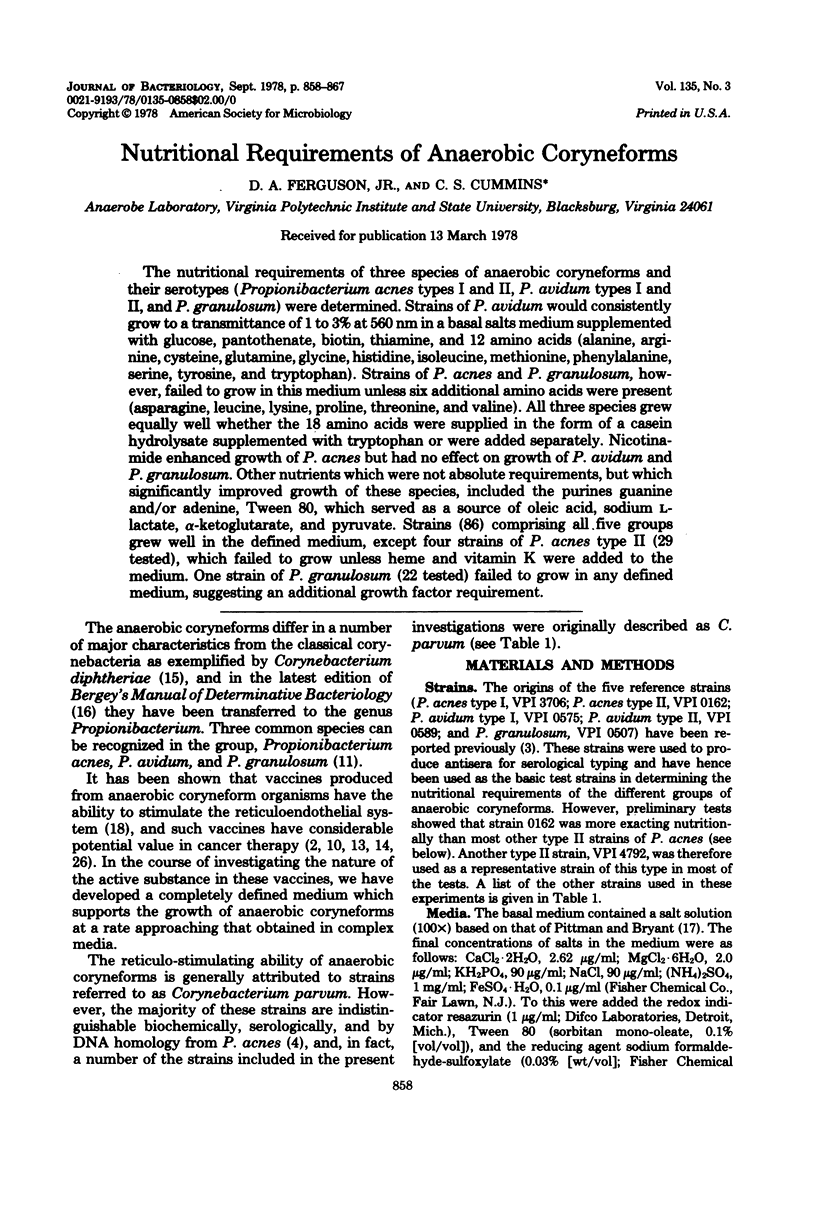
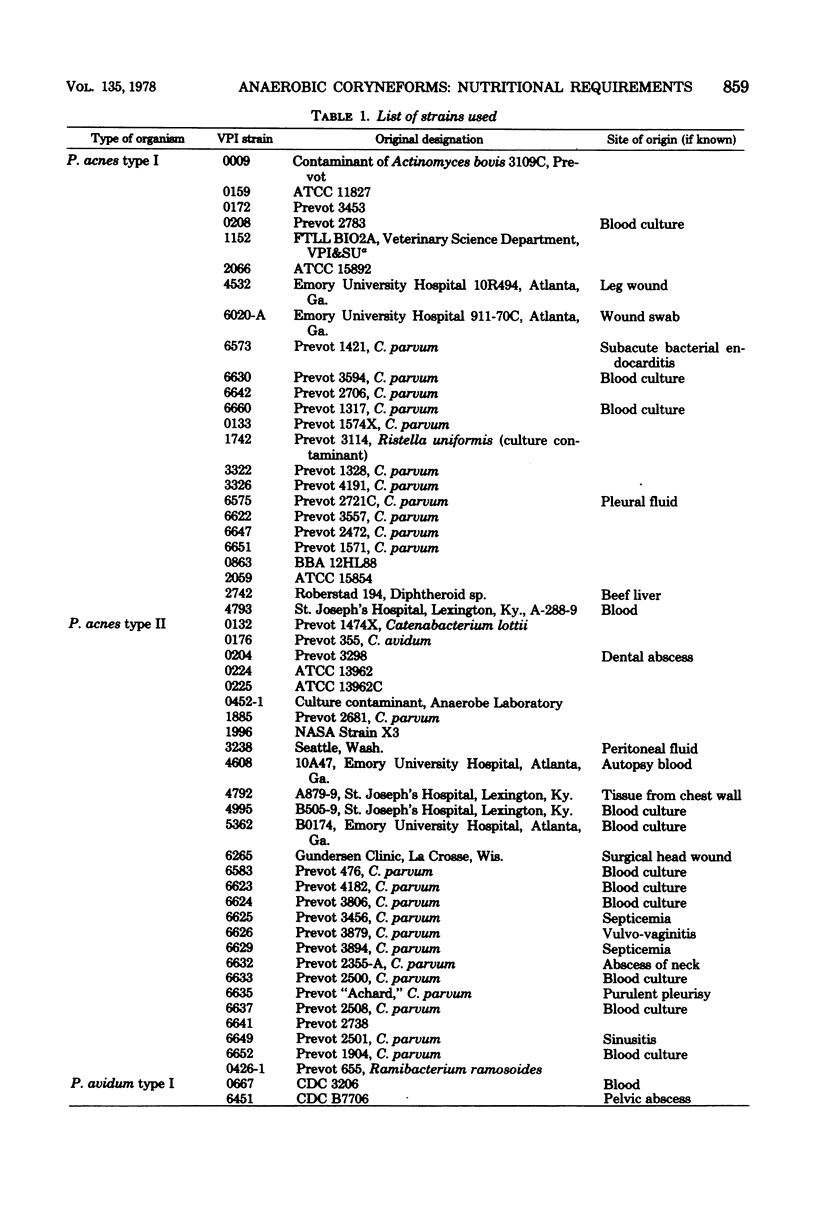
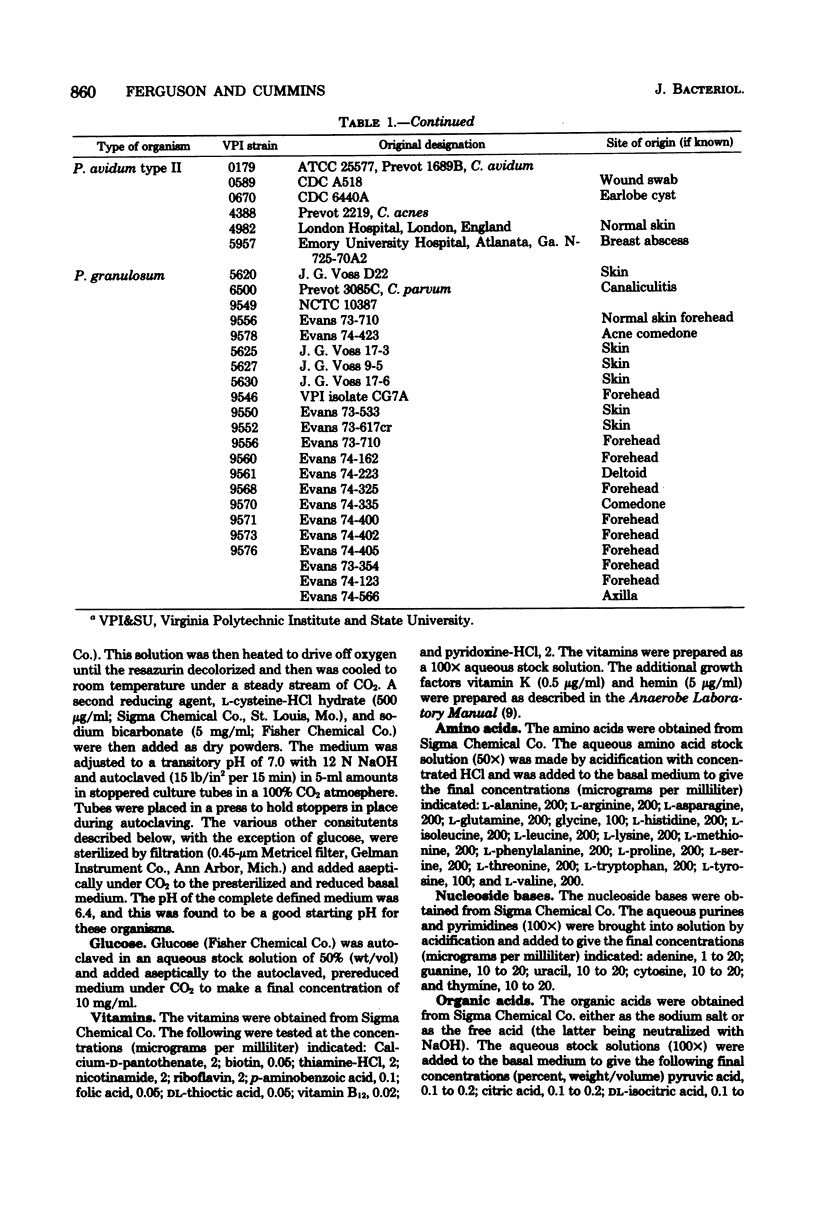
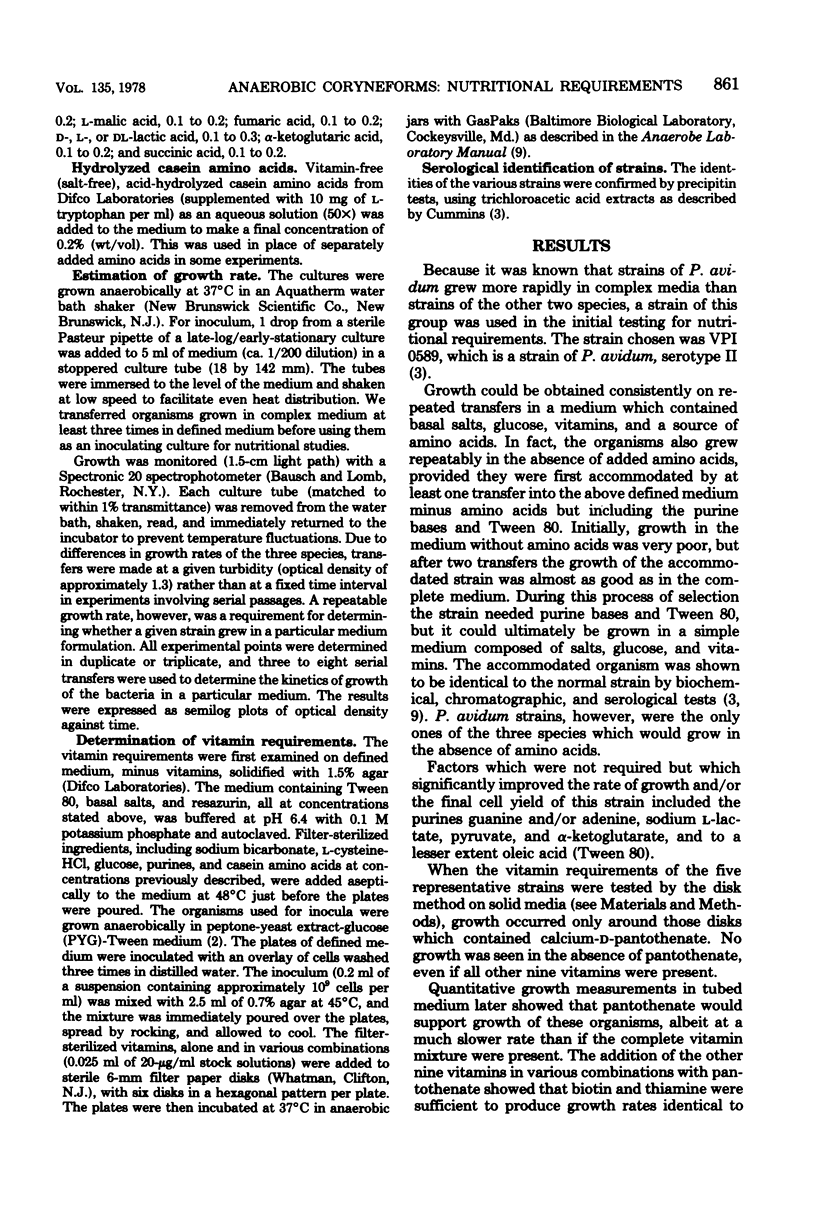
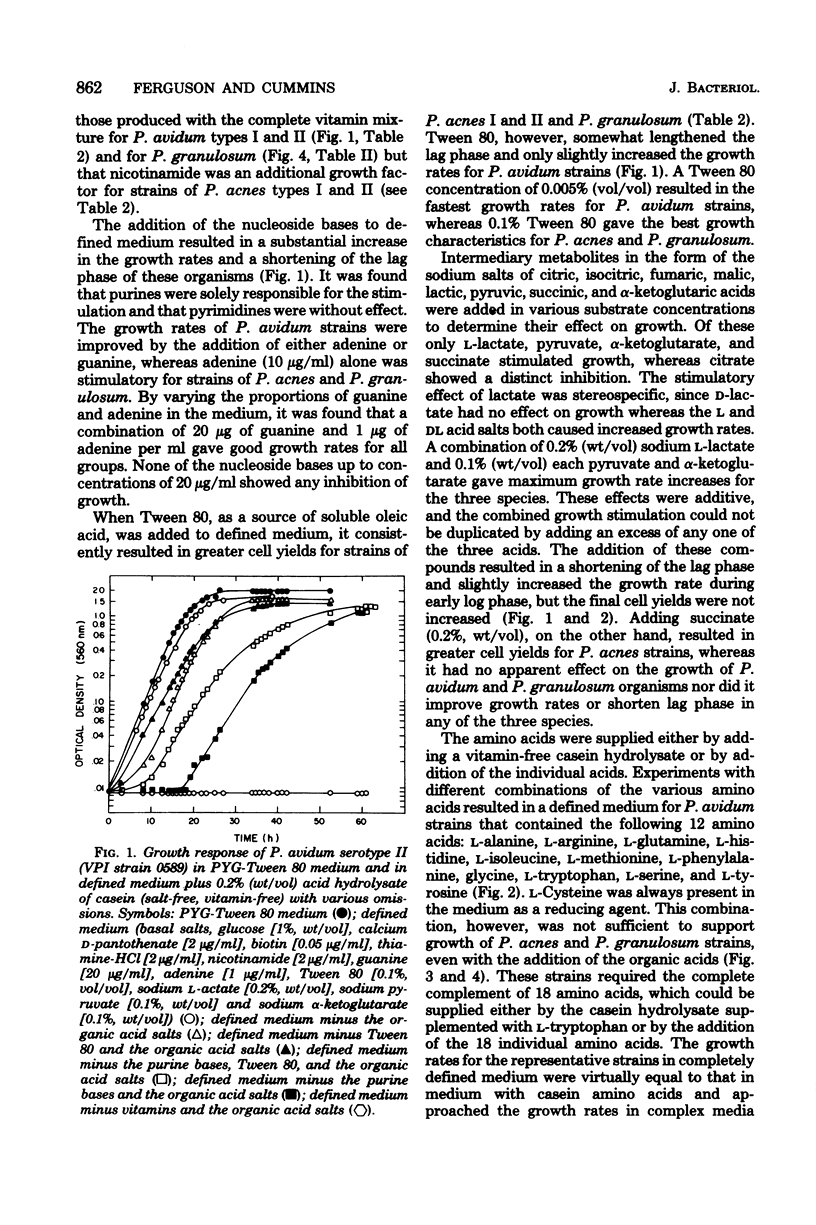
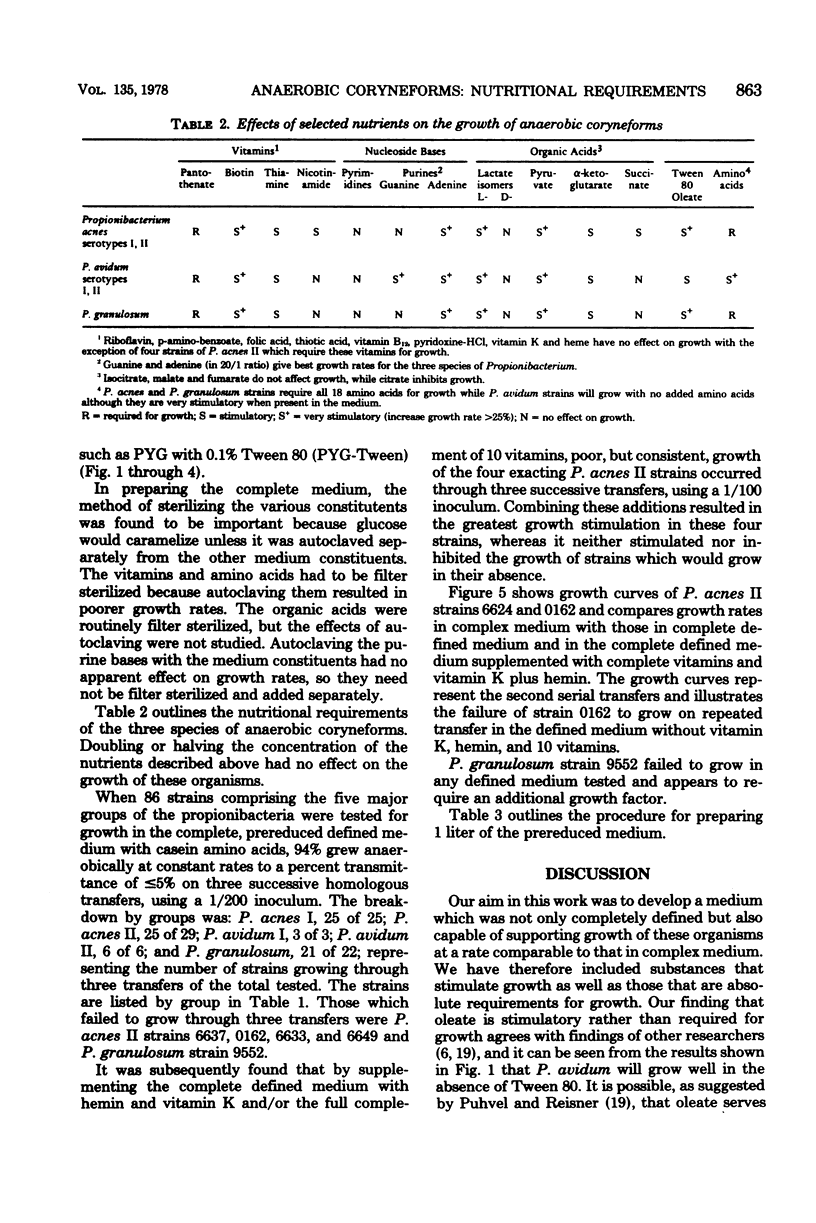
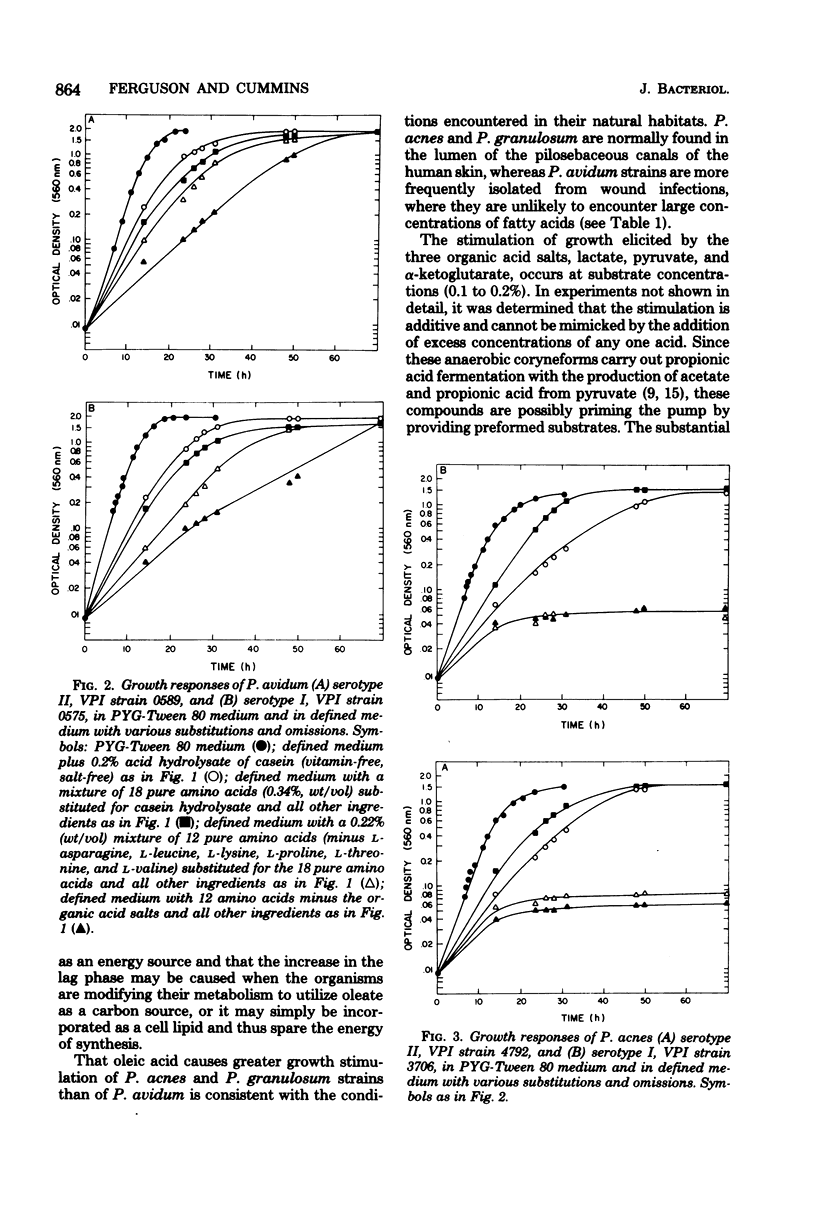
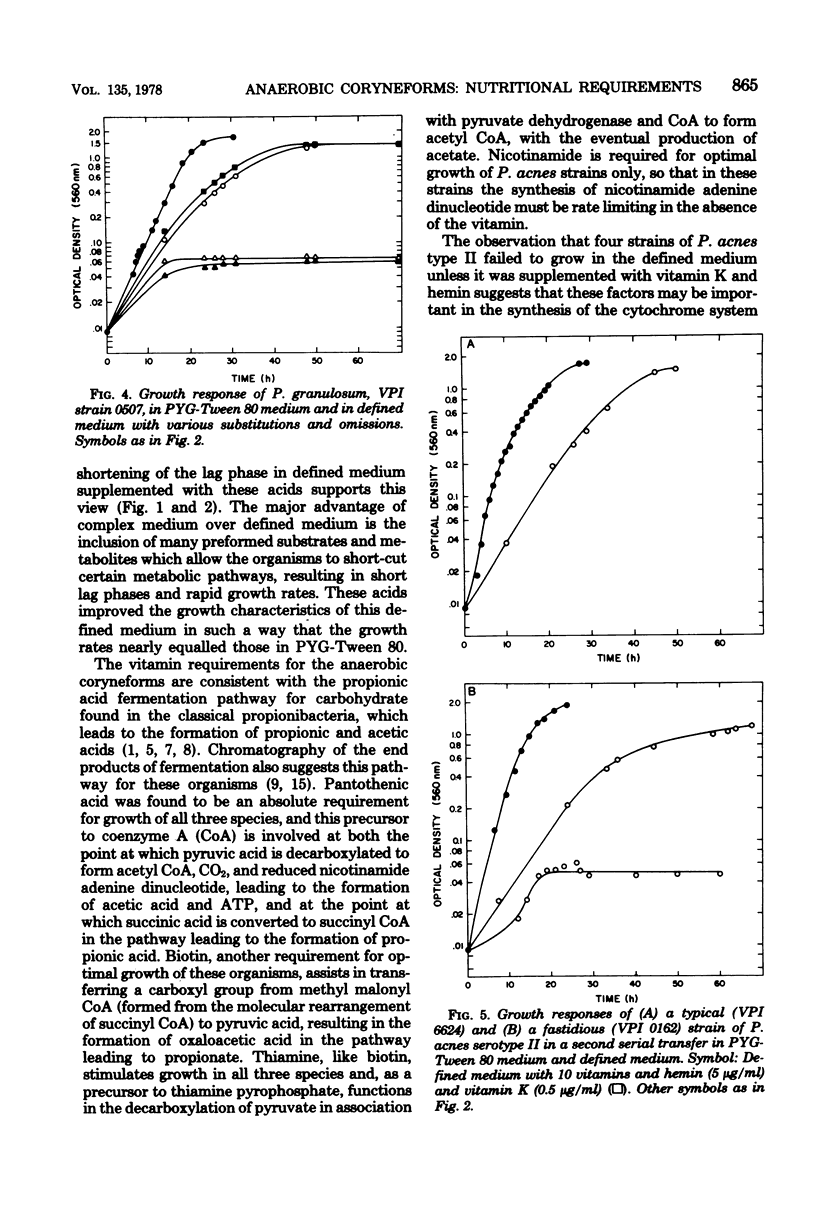
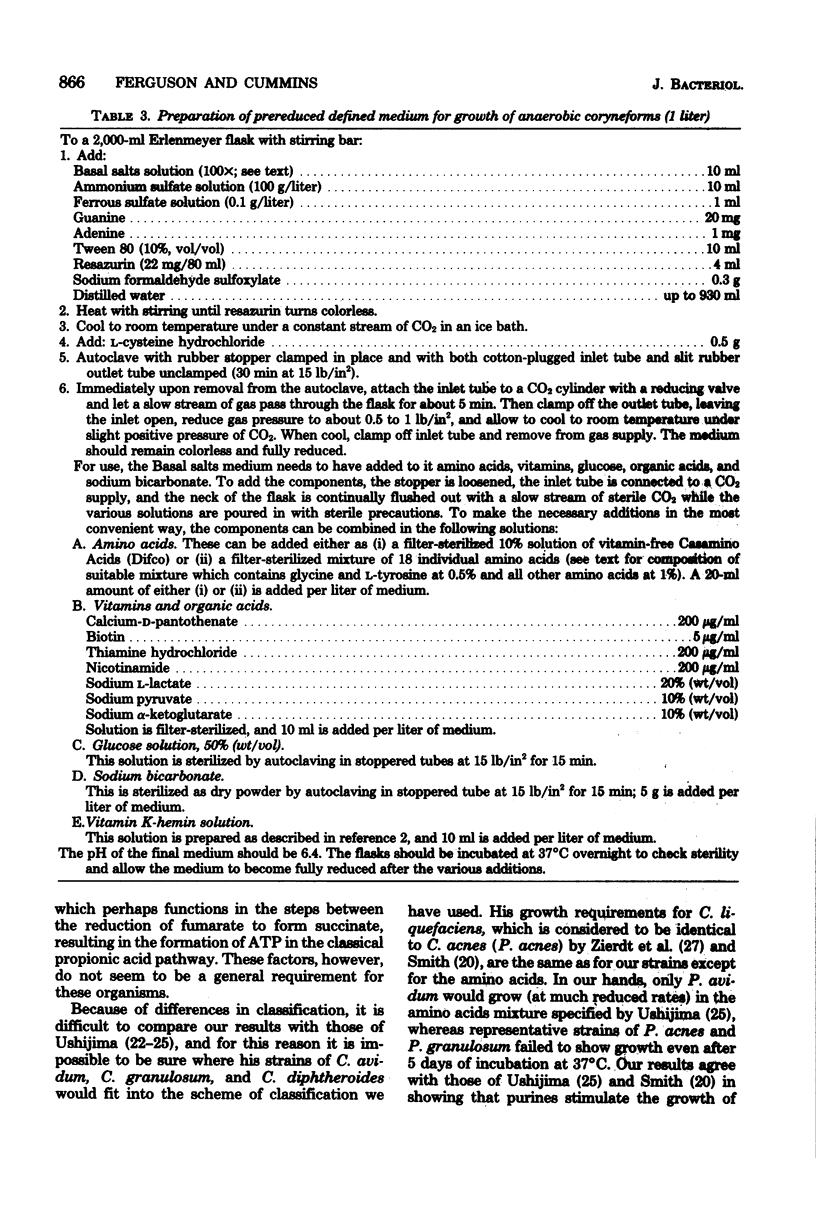
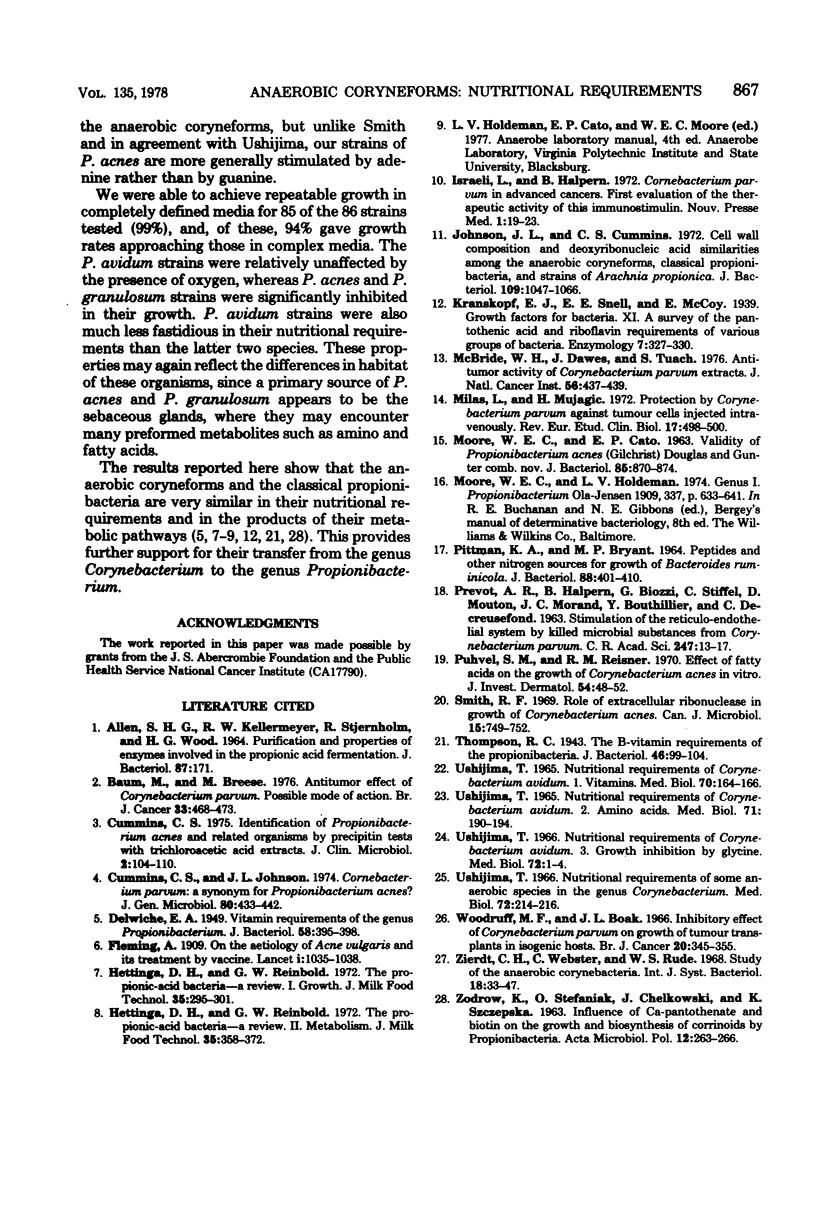
Selected References
These references are in PubMed. This may not be the complete list of references from this article.
- ALLEN S. H., KELLERMEYER R. W., STJERNHOLM R. L., WOOD H. G. PURIFICATION AND PROPERTIES OF ENZYMES INVOLVED IN THE PROPIONIC ACID FERMENTATION. J Bacteriol. 1964 Jan;87:171–187. doi: 10.1128/jb.87.1.171-187.1964. [DOI] [PMC free article] [PubMed] [Google Scholar]
- Baum M., Breese M. Antitumour effect of corynebacterium parvum. Possible mode of action. Br J Cancer. 1976 Apr;33(4):468–473. doi: 10.1038/bjc.1976.73. [DOI] [PMC free article] [PubMed] [Google Scholar]
- Cummins C. S. Identification of Propionibacterium acnes and related organisms by precipitin tests with trichloroacetic acid extracts. J Clin Microbiol. 1976 Aug;2(2):104–110. [PMC free article] [PubMed] [Google Scholar]
- Cummins C. S., Johnson J. L. Corynebacterium parvum: a synonym for Propionibacterium acnes? J Gen Microbiol. 1974 Feb;80(2):433–442. doi: 10.1099/00221287-80-2-433. [DOI] [PubMed] [Google Scholar]
- Israël L., Halpern B. Le Corynebacterium parvum dans les cancers avancés. Premiére évaluation de l'activité thérapeutique de cette immuno-stimuline. Nouv Presse Med. 1972 Jan 1;1(1):19–23. [PubMed] [Google Scholar]
- Johnson J. L., Cummins C. S. Cell wall composition and deoxyribonucleic acid similarities among the anaerobic coryneforms, classical propionibacteria, and strains of Arachnia propionica. J Bacteriol. 1972 Mar;109(3):1047–1066. doi: 10.1128/jb.109.3.1047-1066.1972. [DOI] [PMC free article] [PubMed] [Google Scholar]
- MOORE W. E., CATO E. P. VALIDITY OF PROPIONIBACTERIUM ACNES (GILCHRIST) DOUGLAS AND GUNTER COMB. NOV. J Bacteriol. 1963 Apr;85:870–874. doi: 10.1128/jb.85.4.870-874.1963. [DOI] [PMC free article] [PubMed] [Google Scholar]
- McBride W. H., Dawes J., Tuach S. Antitumor activity of Corynebacterium parvum extracts. J Natl Cancer Inst. 1976 Feb;56(2):437–439. [PubMed] [Google Scholar]
- Milas L., Mujagić H. Protection by Corynebacterium parvum against tumour cells injected intravenously. Rev Eur Etud Clin Biol. 1972 May;17(5):498–500. [PubMed] [Google Scholar]
- PITTMAN K. A., BRYANT M. P. PEPTIDES AND OTHER NITROGEN SOURCES FOR GROWTH OF BACTEROIDES RUMINICOLA. J Bacteriol. 1964 Aug;88:401–410. doi: 10.1128/jb.88.2.401-410.1964. [DOI] [PMC free article] [PubMed] [Google Scholar]
- PREVOT A. R., HALPERN B., BIOZZI G., STIFFEL C., MOUTON D., MORARD J. C., BOUTHILLIER Y., DECREUSEFOND C. [Stimulation of the reticuloendothelial system (RES) by killed microbial substances from Corynebacterium parvum]. C R Hebd Seances Acad Sci. 1963 Jul 1;257:13–17. [PubMed] [Google Scholar]
- Puhvel S. M., Reisner R. M. Effect of fatty acids on the growth of Corynebacterium acnes in vitro. J Invest Dermatol. 1970 Jan;54(1):48–52. doi: 10.1111/1523-1747.ep12551667. [DOI] [PubMed] [Google Scholar]
- Smith R. F. Role of extracellular ribonuclease in growth of Corynebacterium acnes. Can J Microbiol. 1969 Jul;15(7):749–752. doi: 10.1139/m69-131. [DOI] [PubMed] [Google Scholar]
- Thompson R. C. The B-Vitamin Requirements of the Propionibacteria. J Bacteriol. 1943 Jul;46(1):99–104. doi: 10.1128/jb.46.1.99-104.1943. [DOI] [PMC free article] [PubMed] [Google Scholar]
- Ushijima T. [Nutrients required by Corynebacterium avidum. II. Amino acids]. Igaku To Seibutsugaku. 1965 Oct 10;71(4):190–194. [PubMed] [Google Scholar]
- Ushijima T. [Nutritional requirement of Corynebacterium avidum. 3. Growth inhibition by glycine]. Igaku To Seibutsugaku. 1966 Jan 1;72(1):1–4. [PubMed] [Google Scholar]
- Woodruff M. F., Boak J. L. Inhibitory effect of injection of Corynebacterium parvum on the growth of tumour transplants in isogenic hosts. Br J Cancer. 1966 Jun;20(2):345–355. doi: 10.1038/bjc.1966.42. [DOI] [PMC free article] [PubMed] [Google Scholar]
- ZODROW K., STEFANIAK O., CHELKOWSKI J., SZCZEPSKA K. INFLUENCE OF CA-PANTOTHENATE AND BIOTIN ON THE GROWTH AND BIOSYNTHESIS OF CORRINOIDS BY PROPIONIBACTERIA. Acta Microbiol Pol. 1963;12:263–266. [PubMed] [Google Scholar]


